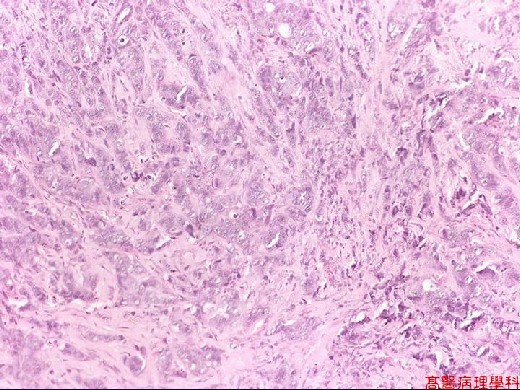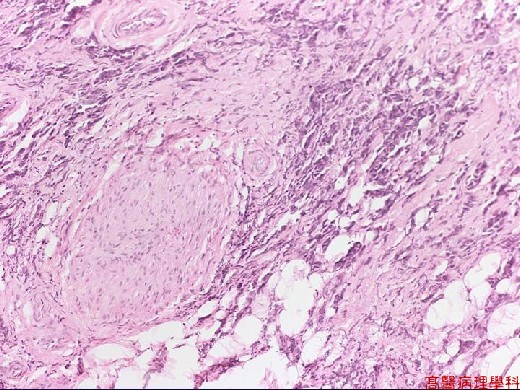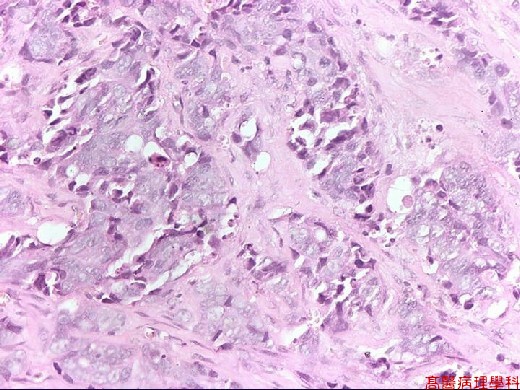《Slide 87.》Infiltrating ductal carcinoma, Breast
A. Brief Descriptions:
-
The largest group of malignant breast tumors.
-
All carcinomas are thought to arise from the terminal ductlobular unit, and “ductal” and “lobular” no longer imply a site or cell type of origin.
B. Gross Findings:
-
The tumor of stony-hard consistency is retracted and infiltrating the surrounding breast substance.
-
On cut surface showing radiating through the surrounding parenchyma into the fat (crab-like configuration).
-
“Chalky streaks” on the cut surface due to duct elastosis.
C. Micro Findings:
-
The tumor can infiltrate the breast tissue.
-
The tumor cells are arranged in cords, sheets, nests or as individual cells with focal irregular ductal formation.
-
Densely fibrotic to desmoplastic stroma.
D. Others:
-
Compare with slide 86, intraductal carcinoma of breast.
E. Reference:
-
Robbins Pathologic Basis of Disease, 6th ed. P.1110.
|
|
【 Fig. 87-1 (LP)】The tumor cells infiltrate the breast tissue.
|
|
【 Fig. 87-2 (LP)】The tumor cells infiltrate in the desmoplastic stroma.
|
|
【 Fig. 87-3 (LP)】The tumor cells are arranged in cords with focal ductal formation.
|
|
【 Fig. 87-4 (LP)】The tumor cells are infiltrating into the adjacent adipose tissue.
|
|
【 Fig. 87-5 (HP)】The tumor cells are pleomorphic and have hyperchromatic nucleus.




